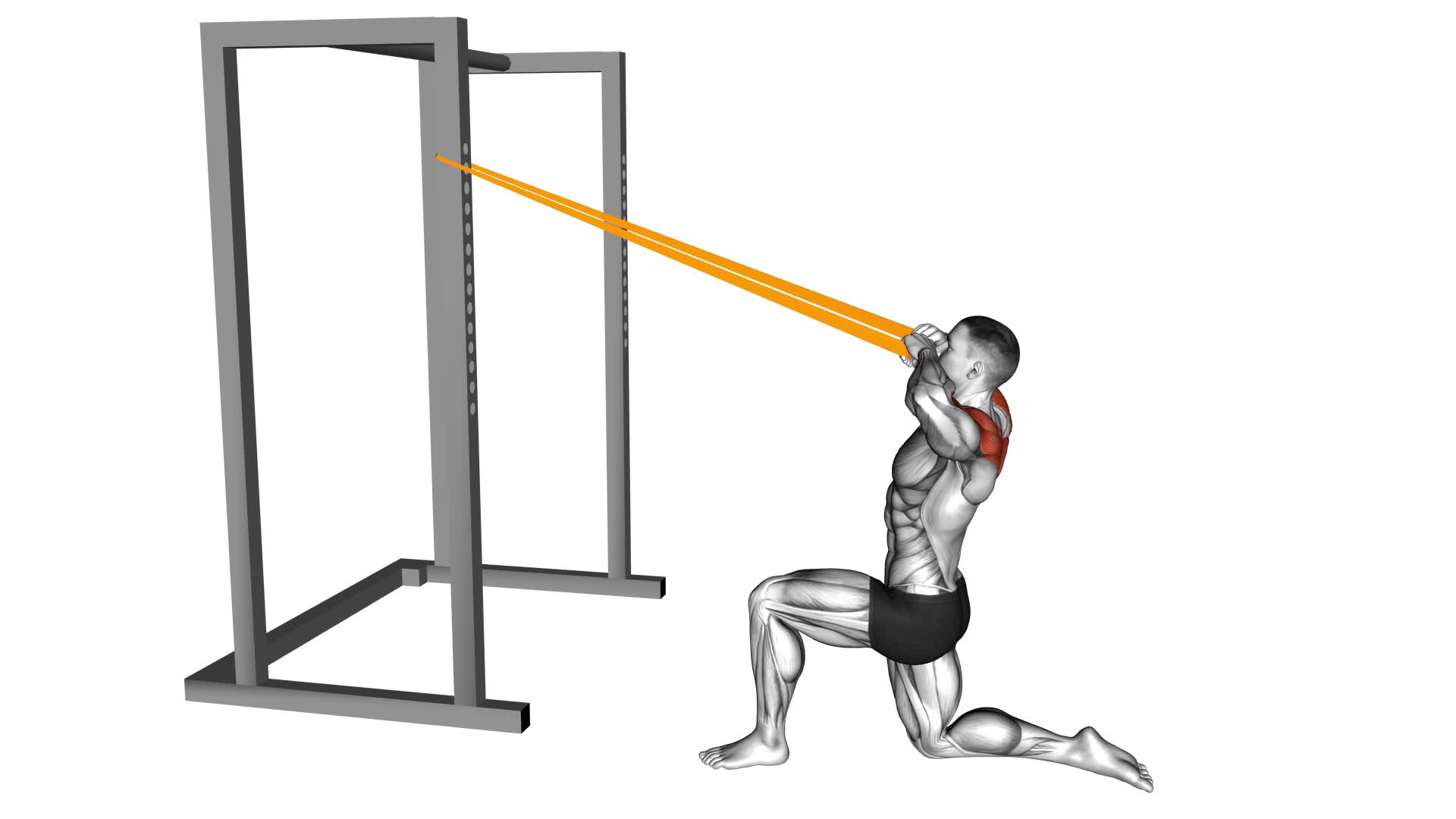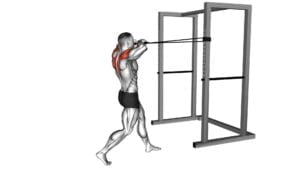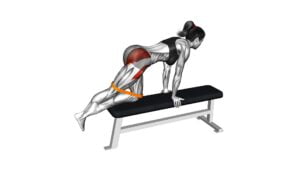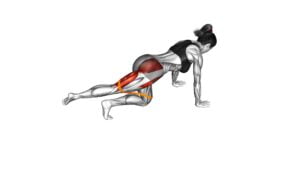Resistance Band Half Kneeling Face Pull – Video Exercise Guide & Tips

Are you looking for a challenging exercise to strengthen your upper body? Look no further than the resistance band half kneeling face pull.
Watch This Exercise Video
This exercise targets your back, shoulders, and arms, helping improve posture and stability.
In this video exercise guide, you'll learn the proper form and technique, as well as tips for choosing the right resistance band and avoiding common mistakes.
Get ready to level up your workout routine with this effective and efficient exercise.
Key Takeaways
- Targets back, shoulders, and arms
- Improves posture and stability
- Strengthens and tones upper body muscles
- Alleviates imbalances and weaknesses
Benefits of the Resistance Band Half Kneeling Face Pull
You can experience significant improvements in upper body strength and posture by incorporating the Resistance Band Half Kneeling Face Pull into your workout routine. This exercise targets the muscles in your upper back, shoulders, and arms, helping to strengthen and tone them. By pulling the resistance band towards your face, you engage the muscles in your upper back, including the rhomboids, rear deltoids, and trapezius. This not only improves your posture but also helps to alleviate any imbalances or weaknesses in these muscles.
One of the key benefits of the Resistance Band Half Kneeling Face Pull is that it can help correct rounded shoulders, a common issue caused by poor posture or sitting for long periods. By strengthening the muscles in your upper back, this exercise pulls your shoulders back, improving your overall posture and alignment. This can't only make you look taller and more confident but also reduce the risk of developing neck and shoulder pain.
To perform this exercise with proper form, start by attaching a resistance band to a secure anchor point at chest height. Take a half kneeling position, with one knee on the ground and the other foot planted firmly on the floor. Hold the resistance band with both hands, palms facing down, and arms extended in front of you. Keeping your core engaged, squeeze your shoulder blades together and pull the resistance band towards your face, leading with your elbows. Pause for a second at the end position, then slowly release the band back to the starting position.
Incorporating the Resistance Band Half Kneeling Face Pull into your workout routine can provide numerous benefits, including improved upper body strength and posture. By performing this exercise with proper form, you can target the muscles in your upper back, shoulders, and arms, helping to strengthen and tone them. Remember to start with a resistance band appropriate for your fitness level and gradually increase the resistance as you become stronger.
Proper Form and Technique for the Exercise
To perform the Resistance Band Half Kneeling Face Pull exercise correctly, focus on maintaining proper form and technique. This will ensure that you get the most out of the exercise and reduce the risk of injury.
One common mistake people make is using too much weight or resistance. It's important to start with a lighter band and gradually increase the resistance as you get stronger. This will allow you to maintain proper form throughout the exercise.
Another common mistake is using too much momentum. Remember to engage your core and stabilize your body throughout the movement. Avoid using your whole body to pull the resistance band towards your face. Instead, focus on isolating the muscles in your upper back and shoulders.
Proper technique for the Resistance Band Half Kneeling Face Pull involves starting in a half kneeling position with one knee on the ground and the other foot planted firmly on the floor. Hold the resistance band with both hands, palms facing down, and arms extended in front of you.
To perform the exercise, pull the band towards your face, leading with your elbows. Keep your shoulders down and back, squeezing your shoulder blades together as you pull. Slowly return to the starting position and repeat for the desired number of repetitions. Remember to breathe throughout the exercise and maintain control of the resistance band at all times.
Choosing the Right Resistance Band for Your Level
When choosing a resistance band for your level, it's important to consider the band strength. Beginners should start with a lighter resistance band and gradually progress to higher levels as they build strength and endurance.
It's essential to choose a band that challenges you without causing strain or discomfort.
Band Strength for Beginners
When choosing the right resistance band for your level as a beginner, it's important to consider band strength. Here are four key factors to keep in mind:
- Start with a light resistance band: As a beginner, it's crucial to begin with a band that offers less resistance. This allows your muscles to adapt and gradually build strength without risking injury.
- Gradually increase resistance: Once you feel comfortable with the light resistance band, it's time to progress to a medium resistance band. This will challenge your muscles further and help you continue to make progress.
- Avoid using bands that are too strong: It can be tempting to jump straight to the strongest band available, but this can lead to overexertion and potential injuries. It's important to progress gradually and listen to your body.
- Consider your exercise goals: Different exercises require different levels of resistance. Consider the specific exercises you plan to do and choose a resistance band that will allow you to perform them effectively.
Progressing Resistance Band Levels
As you progress in your resistance band training, it's important to choose the right resistance band for your level. Progressing resistance band levels is crucial to continually challenge your muscles and improve your strength and fitness.
Resistance bands offer numerous benefits in strength training, such as increasing muscle activation, improving stability, and providing a variable resistance that matches your strength curve. When choosing a resistance band, consider your current strength and fitness level.
Start with a band that allows you to perform exercises with proper form and control, but still provides enough tension to challenge your muscles. As you get stronger, gradually progress to a band with higher resistance to continue challenging yourself and promoting further strength gains.
Common Mistakes to Avoid During the Exercise
To perform the Resistance Band Half Kneeling Face Pull correctly, make sure to avoid the following common mistakes:
- Using too much weight: Proper form is essential for this exercise. Using excessive resistance can compromise your technique and increase the risk of injury. Start with a lighter resistance band and gradually increase the intensity as you become more comfortable with the movement.
- Rounding your shoulders: Keep your shoulders pulled back and down throughout the entire exercise. Avoid rounding or hunching your upper back, as this can put unnecessary strain on your neck and shoulders. Focus on maintaining a strong and stable posture.
- Using momentum: This exercise should be performed with controlled movements. Avoid using momentum to pull the resistance band towards your face. Instead, engage your back muscles and squeeze your shoulder blades together to initiate the movement.
- Neglecting the core: Your core muscles play a crucial role in stabilizing your body during this exercise. Make sure to engage your core by bracing your abs and maintaining a neutral spine. This will help to prevent excessive arching in your lower back.
By avoiding these common mistakes and focusing on proper form, you can maximize the effectiveness of the Resistance Band Half Kneeling Face Pull.
Now, let's explore the variations and progressions of this exercise.
Variations and Progressions of the Resistance Band Half Kneeling Face Pull
Now let's explore the different variations and progressions you can incorporate into your resistance band half kneeling face pull routine.
One way to challenge yourself is by using bands with different resistances to increase or decrease the difficulty.
Additionally, you can try advanced face pull variations, such as adding a rotation or combining the exercise with other movements, to target different muscle groups and further enhance your workout.
Different Band Resistances
You can progress the resistance band half kneeling face pull by using bands with varying levels of resistance. Here are four ways you can adjust the resistance and challenge yourself during this exercise:
- Use multiple bands: By combining two or more resistance bands, you can increase the overall resistance and make the exercise more challenging. This allows you to target your muscles in different ways and work towards your fitness goals.
- Choose a stronger band: If you find that the current resistance band you're using is too easy, try switching to a stronger band. This will provide more resistance and help you build strength and muscle.
- Increase band tension: Another way to adjust the resistance is by increasing the tension in the band. You can do this by stepping further away from the anchor point, creating more resistance as you pull the band towards your face.
- Decrease band tension: Conversely, if the current resistance is too difficult, you can decrease the tension by stepping closer to the anchor point. This will reduce the resistance and allow you to perform the exercise with better control and form.
Remember to always listen to your body and choose a resistance level that challenges you without compromising your form or risking injury.
Advanced Face Pull Variations
As you explore advanced variations of the resistance band half kneeling face pull, you can further challenge your muscles and enhance your workout. Incorporating face pull modifications into your routine can help target specific muscle groups and provide a greater range of motion.
One advanced variation is the resistance band kneeling rotational face pull. This exercise involves adding a rotational component to the traditional face pull, engaging your shoulders, upper back, and core.
Another modification is the resistance band kneeling single-arm face pull. By performing the face pull with one arm at a time, you can increase the intensity and focus on each side separately.
These advanced shoulder exercises can help improve strength, stability, and overall upper body function. Remember to always use proper form and gradually increase the resistance as you become more comfortable with each variation.
Tips for Incorporating the Exercise Into Your Workout Routine
To effectively incorporate the Resistance Band Half Kneeling Face Pull into your workout routine, consistently perform this exercise at least twice a week.
Here are some tips to help you make the most out of this exercise:
- Start with the right resistance band: Choose a band that provides enough tension to challenge your muscles without causing excessive strain. Experiment with different resistance levels to find the one that works best for you.
- Focus on proper form: Maintain a half kneeling position with one knee on the ground and the other foot planted firmly on the floor. Hold the resistance band with both hands in front of your chest, palms facing each other. Pull the band towards your face, squeezing your shoulder blades together. Keep your core engaged and avoid any unnecessary twisting or leaning.
- Gradually increase the intensity: As you become more comfortable with the exercise, gradually increase the resistance or try performing more repetitions. This will help to continually challenge your muscles and promote progress over time.
- Combine with other exercises: The Resistance Band Half Kneeling Face Pull can be incorporated into a full-body workout routine. Consider combining it with other exercises that target different muscle groups for a well-rounded workout.
By incorporating modifications and consistently practicing the Resistance Band Half Kneeling Face Pull, you can enjoy the benefits of improved upper body strength, posture, and shoulder stability.
Remember to always listen to your body and consult a fitness professional if you have any concerns or questions.
Frequently Asked Questions
How Many Sets and Repetitions Should I Do of the Resistance Band Half Kneeling Face Pull?
To maximize the benefits of incorporating resistance band exercises in your workout routine, it's important to know how many sets and repetitions to do of the resistance band half kneeling face pull.
This exercise targets your upper back and shoulders, helping to improve posture and strengthen those muscles.
Aim for 2-3 sets of 10-15 repetitions, making sure to maintain proper form throughout.
This will ensure that you're effectively engaging the targeted muscles and avoiding injury.
Can I Use Dumbbells Instead of Resistance Bands for This Exercise?
Yes, you can use dumbbells as an alternative to resistance bands for the half kneeling face pull exercise. Dumbbells provide a similar resistance and target the same muscles.
Incorporating the half kneeling face pull into your workout routine offers several benefits, including improved shoulder stability and posture, increased upper back strength, and enhanced overall upper body strength.
It's a great exercise for targeting the muscles in your upper back and shoulders while also engaging your core.
Will the Resistance Band Half Kneeling Face Pull Help Improve My Posture?
Yes, the resistance band half kneeling face pull can help improve your posture.
Resistance band exercises, like this one, are great for targeting the muscles in your upper back and shoulders, which play a key role in maintaining good posture.
The pulling motion engages these muscles, helping to strengthen them and promote better alignment.
Is This Exercise Suitable for Beginners or Should It Only Be Done by Advanced Fitness Enthusiasts?
The resistance band half kneeling face pull can be suitable for beginners with some modifications. This exercise helps strengthen your upper back and improve posture.
To make it more beginner-friendly, start with a lighter resistance band and focus on proper form. You can also decrease the intensity by reducing the number of repetitions or using a wider grip.
Incorporating this exercise into your routine can gradually build strength and improve your overall fitness level.
Can I Perform the Resistance Band Half Kneeling Face Pull Without a Partner or Should I Always Have Someone to Hold the Band for Me?
You can definitely perform the resistance band half kneeling face pull without a partner. There are modification options available for this exercise that allow you to do it alone.
However, having a partner to hold the band can provide additional resistance and make the exercise more challenging.
It's important to maintain proper form and control throughout the movement to maximize its effectiveness.
Conclusion
In conclusion, the resistance band half kneeling face pull is a highly effective exercise for strengthening the upper back and shoulders. By using proper form and choosing the right resistance band, you can maximize the benefits of this exercise.
Avoiding common mistakes and incorporating variations and progressions can further enhance your workout routine.
Overall, the resistance band half kneeling face pull is a valuable addition to any fitness regimen.

Author
Years ago, the spark of my life’s passion ignited in my mind the moment I stepped into the local gym for the first time. The inaugural bead of perspiration, the initial endeavor, the very first surge of endorphins, and a sense of pride that washed over me post-workout marked the beginning of my deep-seated interest in strength sports, fitness, and sports nutrition. This very curiosity blossomed rapidly into a profound fascination, propelling me to earn a Master’s degree in Physical Education from the Academy of Physical Education in Krakow, followed by a Sports Manager diploma from the Jagiellonian University. My journey of growth led me to gain more specialized qualifications, such as being a certified personal trainer with a focus on sports dietetics, a lifeguard, and an instructor for wellness and corrective gymnastics. Theoretical knowledge paired seamlessly with practical experience, reinforcing my belief that the transformation of individuals under my guidance was also a reflection of my personal growth. This belief holds true even today. Each day, I strive to push the boundaries and explore new realms. These realms gently elevate me to greater heights. The unique combination of passion for my field and the continuous quest for growth fuels my drive to break new ground.







